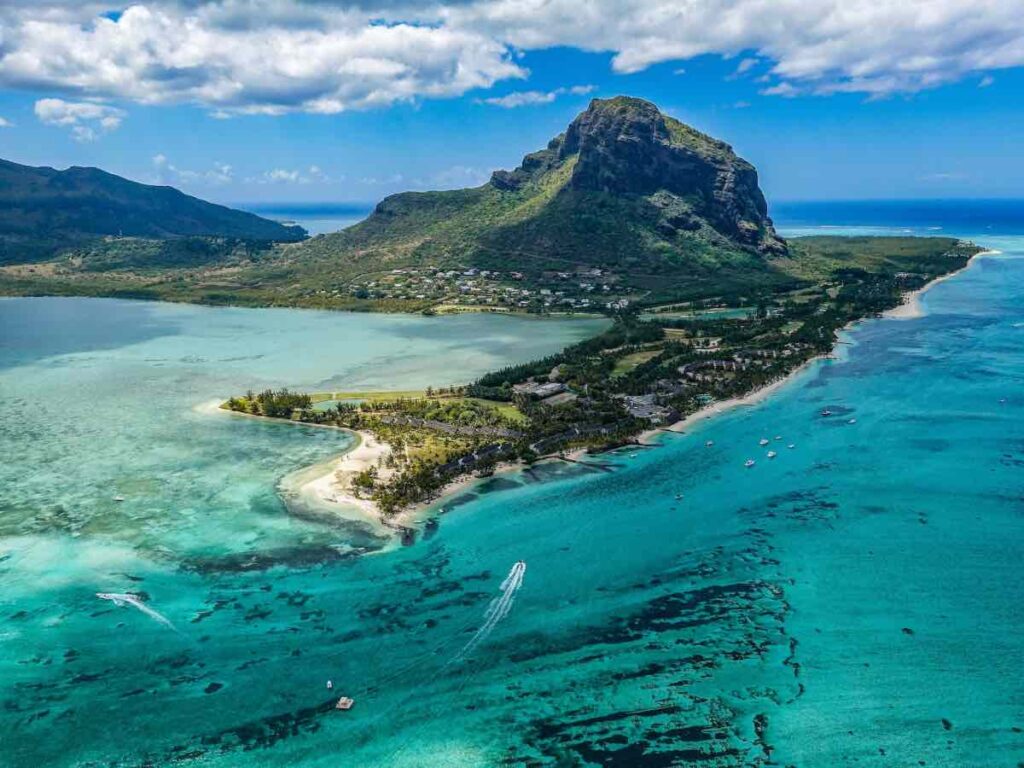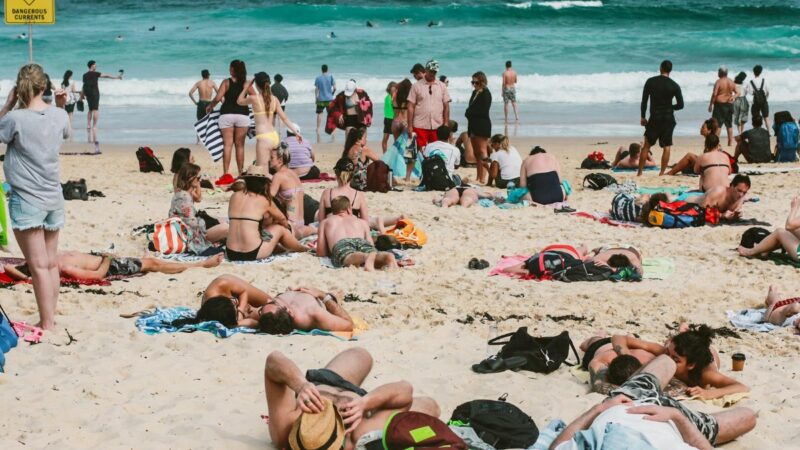Digital Nomad Visa Guide for Australians

Working holiday visas are a great option for young people who want to experience life in another country. But if you’re self-employed or work online, a digital nomad visa could be ideal!
With a digital nomad visa, you can live in another country for an extended period – usually a year or two. During that time, you can continue to work remotely in your existing job, or for your own online business with international clients.
In many cases, you won’t need to pay local income tax in the destination country – though this varies.
The UAE, Estonia, Barbados and the Cayman Islands were among the first countries to introduce special visas for remote workers in 2020.
Initially, these were a way to support struggling tourism industries during the COVID-19 pandemic. But as more people began working remotely and discovering the benefits of the digital nomad lifestyle, more countries started adapting to this new trend.
In just a few years, the concept has really taken off! In 2025, there are now over 50 countries offering digital nomad visas in some form. Australian citizens are eligible for many of these.
Some of the countries to most recently introduce new digital nomad visas include Thailand, Japan, South Korea, South Africa, Kenya and Kazakhstan.
Why digital nomad visas?
For governments, these visas are a way to attract visitors with a stable income who will stay for a longer time, spend money in the local economy and develop connections with locals. They’re great too for remote workers who now have more opportunities to live in more countries. It’s a win-win!
Unlike working holiday visas, digital nomad visas don’t have an age limit. You may also be able to bring your children and/or family with you.

However, digital nomad visas do not give you the right to work for an employer based in the destination country. They are not traditional work visas.
Typical digital nomad visa requirements
Remote worker and digital nomad visas are aimed more towards educated professionals with relatively high incomes, rather than backpackers. So, the requirements to get a digital nomad visa are a bit different to working holiday visa requirements.
The good news is that the countries offering digital nomad visas genuinely want to encourage people to move there. In fact, in many cases, these visas are actively promoted by the country’s tourism authority. Therefore, most – but sadly not all – countries make the application process as easy as possible.
To get a digital nomad visa, things you might need include:
- A minimum level of savings and/or monthly income (this threshold is generally much higher than the minimum savings required to get a working holiday visa)
- You must be self-employed or work remotely for a business based outside of the country (by comparison, you are not required to have a job to apply for most working holiday visas)
- Health insurance to cover your stay
- In some cases, proof of accommodation in the destination country
You’ll usually need to pay a visa fee as well, but not always. Mauritius and Georgia don’t charge anything to apply for a remote worker visa!

Do you need to pay local income tax with a digital nomad visa?
The tax rules for digital nomads vary by host country.
You would generally need to pay income tax in the country where you earned the money (i.e. where your employer or business is based). But digital nomad visa holders often don’t need to pay income tax in the host country where they’re living temporarily.
There are exceptions! For example, if you stayed for more than six months in a country such as Mauritius, Spain, Greece or Albania, you could become a tax resident in that country. This list of countries is not exhaustive. So, check the rules for each country and consult a tax professional if in doubt.
Even if you do have to pay income tax in the country where you’ll be living, your tax liability may be limited if Australia has a tax treaty preventing double taxation with that country.
Which countries offer digital nomad visas?
The countries shown on the interactive map below offer digital nomad visas to Australian citizens working remotely:
The list of eligible countries is constantly growing as more introduce digital nomad visas!
Summary of key visa information by country
The table below contains a summary of digital nomad visas available to Australian citizens, in alphabetical order by country.
Note: If you’re reading this article on a smartphone, the table below might be easier to read if you rotate your phone and view it in landscape.
| Country | Visa type | Maximum duration | Can renew? | Visa fee | Minimum annual income |
|---|---|---|---|---|---|
| Albania | Unique Permit (D visa for self-employed people/digital mobile workers) | 1 year | Yes | Reciprocity based | Sufficient to cover living expenses |
| Antigua & Barbuda | Nomad Digital Residence programme | 2 years | Yes | USD1,500 (~AUD2,300) | USD50,000 (~AUD77,000) |
| Argentina | Digital nomad visa | 6 months | Yes | USD200 (~AUD310) | |
| Barbados | Welcome Stamp visa | 1 year | Yes | USD2,000 (~AUD3,100) | USD50,000 (~AUD77,000) |
| Belize | Work Where You Vacation | 6 months | BZD500 (~AUD385) | USD75,000 (~AUD116,000) | |
| Bermuda | Work from Bermuda Certificate | 1 year | Yes | USD275 (~AUD425) | N/A |
| Brazil | Visa for digital nomads (VITEM XIV) | 1 year | Yes | Approx. AUD228 (for Australians) | USD18,000 (~AUD28,000) |
| Canada | No work visa required for digital nomad stays up to 6 months | 6 months | |||
| Colombia | V (Visitor) Visa Digital Nomads | 2 years | Approx. USD52 + USD170 (~AUD360) | USD10,800 (~AUD16,800) | |
| Costa Rica | Rentista (freelancer visa) | 2 years | USD250 (~AUD385) | USD60,000 (~AUD93,000) | |
| Croatia | Digital nomad residence permit | 1 year | HRK640 (~AUD138) | HRK202,890 (~AUD44,000) | |
| Curaçao | @HOME in Curaçao | 6 months | Yes | ANG535 (~AUD460) | N/A |
| Cyprus | Digital Nomad Visa Scheme | 1 year | Yes (up to 2 more years) | EUR70 + EUR70 registration fee (~AUD230 total) | EUR42,000 (~AUD69,000) after tax |
| Czech Republic | Živnostenský (freelancer) visa or Digital Nomad program | 1 year | Yes | EUR100 (~AUD160) + CZK1,800 (~AUD120) monthly taxes | EUR5,587 (~AUD9,100) in savings |
| Dominica | Work in Nature | 18 months | USD900 (~AUD1,400) | USD50,000 (~AUD77,000) | |
| Ecuador | Nomad Visa (rentista visa) | 2 years | USD450 (~AUD670) | USD15,300 (~AUD22,750) | |
| Estonia | Digital Nomad Visa | 1 year | EUR100 (~AUD159) | EUR54,750 (~AUD88,000) |
|
| Georgia | Remotely from Georgia | 1 year | Free | USD24,000 (~AUD32,150) | |
| Greece | Greece Digital Nomad Visa | 2 years | Yes | EUR75 (~AUD120) | EUR42,000 (~AUD69,000) after tax |
| Hungary | White Card | 1 year | Yes (up to 2 years) | HUF39,000/EUR110 (~AUD180) | EUR24,000 (~AUD39,000) |
| Iceland | Long-term visa for remote workers | 6 months | Must wait 12 months | ISK7,800 (~AUD88) | ISK12,000,000 (~AUD136,000) |
| Indonesia | E33G Remote Worker Visa | 1 year | USD150 + IDR2,700,000 (~AUD492 in total) | USD60,000 (~AUD90,500) | |
| Italy | Digital Nomad/Remote Salaried Employment Visa | 1 year | ~AUD190 | EUR33,000 (~AUD55,000) | |
| Japan | Digital Nomad visa | 6 months | No | ~AUD65 | JPY10 million (~AUD104,000) |
| Kazakhstan | Neo Nomad Visa (B12-1) | 1 year | USD90 (~AUD140) | USD36,000 (~AUD56,000) | |
| Kenya | Class N: Digital Nomad Visa | 1 year | USD55,000 (~AUD88,000) | ||
| Kyrgyzstan | Digital Nomad (DN) visa | 6 months | KGS12,097 (~AUD225) | Proof of financial stability | |
| Latvia | Long stay visa for remote work | 1 year | Yes | EUR60 (~AUD95) | Approx. EUR41,196 (~AUD67,000) |
| Malaysia | DE Rantau Nomad Pass | 1 year | Yes (up to 2 years) | MYR1,000 (~AUD330) | USD24,000 (~AUD37,000) |
| Malta | Nomad Residence Permit | 1 year | Yes (up to 3 years) | EUR300 (~AUD490) | EUR32,400 (~AUD53,000) |
| Mauritius | Premium Visa | 1 year | Yes | Free | N/A |
| Mexico | Temporary Resident Visa | 1 year | Yes (for 3 years) | CAD56 (~AUD60) | CAD32,640 (~AUD37,000) |
| Montserrat | Remote Workers Stamp | 1 year | Yes | USD500 (~AUD770) | USD70,000 (~AUD108,000) |
| Namibia | Digital Nomad Visa | 6 months | USD124/NAD2,200 (~AUD190) | USD24,000 (~AUD37,000) | |
| Norway | Residence permit for independent contractors | 2 years | EUR600 (~AUD980) | EUR35,719 (~AUD58,000) | |
| Panama | Short stay visa for remote workers | 9 months | Yes (up to 18 months) | PAB250/USD250 (~AUD380) | USD36,000 (~AUD55,000) |
| Portugal | Residency (D8) visa for digital nomads | 4 months | Within first 4 months, you apply for a longer-term residency permit | EUR90 (~AUD140) | EUR33,840 (~AUD55,000) |
| Romania | Digital nomad visa | 1 year | EUR120 (~AUD195) | ~LEI219,420 (~AUD72,000) |
|
| Seychelles | Workcation Visitor Permit | 1 year | EUR45 (~AUD73) | N/A | |
| South Africa | Remote Work Visa | 3 years | ~ZAR425 (~AUD37) | ZAR650796 (~AUD56,000) | |
| South Korea | F-1-D Workation Visa | 1 | Yes (up to 2 years) | AUD210 | ~KRW85 million (~AUD96,000) |
| Spain | Digital nomad/telework visa | 1 year | Yes | ~USD85 (depends on nationality) | ~EUR25,920 (~AUD42,000) |
| St Lucia (British Overseas Territory) | Non-Immigrant Visa | 1 year | XCD175 (~AUD100) | N/A | |
| Taiwan | Digital Nomad Visa (or Gold Card for a longer stay) | 3 months | Yes | USD24,000-60,000 (~AUD38,000-96,000) | |
| Thailand | Destination Thailand Visa | 5 years | Must leave Thailand or renew every 180 days | AUD600 | THB500,000 (~AUD22,000) in savings |
| United Arab Emirates | Dubai virtual working programme | 1 year | Yes | USD287 (~AUD445) + medical insurance & processing fees | USD60,000 (~AUD93,000) |
| Uruguay | Provisional digital nomad permit | 6 months | Yes | ~UYU322 (~AUD13) |
You can click on any of the links above for more information about the digital nomad visas, remote worker visas or residence permits offered by each country. Where possible, we’ve provided links to official government websites.
You can also see our separate guide to digital nomad visas for Bali & Indonesia.

Other countries may offer digital nomad visas for other nationalities
There are a few other countries that also offer remote worker visas to people from specific countries, but not to Australians.
For example, Cabo Verde’s Remote Working Program is available only to people from Europe, North America, Community of Portuguese Speaking Countries (CPLP) or Economic Community of West African States (CEDEAO).
Türkiye now offers digital nomad visas to citizens of over 30 countries including European Union nations and Russia. Australians are not on the list of eligible nationalities.
Countries that no longer issue digital nomad visas
Anguilla and the Cayman Islands (both British Overseas Territories) previously offered digital nomad visas. However, nomad visa applications for these destinations do not currently appear to be open.
Countries planning to introduce digital nomad visas in the future
Other countries that have announced or are currently implementing digital nomad visa programs include Peru, Sri Lanka, North Macedonia, Montenegro, Egypt and The Philippines.
The Indian state of Goa is also considering this.






Such a fantastic article Matt! It’s great to finally see the digital nomad visas available to Australians in one easy-to-use place. I’ve shared this already with a few people.
Once we fully open our border again, I’ll be keeping a close eye on how many online English teachers start taking advantage of these on my site [teachenglishonline.com.au] and in my community. Many, I think!
Hi Matt,
Love to see what business structure you would advise setting up in Australia to do this. I’ve learnt that While Australia is remote working friendly, it is not “digital nomad” friendly. What I mean by this is that setting up some sort of business ties you down the residency in Australia – You need to be able to have an Australian address at all times. You can set up a business entity and then get a permanent residence overseas.
The Sole trader you can actually reside overseas (But you’ll have to pay the australian non resident tax rates) but it’s not suitable for everyone because if you contract through a sole trader, the ATO classes you as an “employee” if you do work paid monthly etc and that’s not allowed on the sole trader. You can’t usually work for an employer, you normally have to be paid for a result and not a fixed rate per month or rate per hours kind of arrangement.
Then if you have a private company limited by shares, one of the directors must reside in Australia. The only way out is to get an Australian resident director so they can control the business back home in Australia while you update your address to your overseas address. The company address also has to be an australian street address and you can’t use a post office box. Thankfully you can use a virtual office to get out of this problem at least as the registered office.
So you see, it looks like you can zip over temporary while maintaining a property or rent back home, but you can’t move there for long periods, unless your a sole trader or you want to hire a director for your company.
Hi Chris, these are all interesting points. Unfortunately, I can’t give you advice on this kind of thing as I’m not an accountant. I would recommend talking to a good accountant about this.
Hello Matt I am French and I am wondering if you think Australia will be open to open at digital nomad visa soon ? Thanks
I haven’t heard anything yet, but have you looked to see if you might qualify for another type of visa?
Personally I can’t see Australia offering something like this within the next year or two (although I absolutely think they should!).
Hi
I want to apply for Brazil or Portugal
Some countries offer 1 year. What of you decide to go back in 3months.
Can you do multiple visits, say go back home every 3 months?
And what is the process to apply
Who do I contact for Portugal?
I believe both Brazil and Portugal’s digital nomad visas are multiple-entry visas. So you can do multiple visits while the visa remains valid.
Please see the links above (under “Which countries offer digital nomad visas?”) for more details about the visas offered by each country.
Hi matt,
I am looking to apply for the digital nomad visa in Spain and I have essentially got all the documents ready to go. The only real issue I have at the moment is the Social Security Certificate, there isn’t a whole lot of information about it out there. The only real info I can find is that it would be better to be a sole trader, but if you work for a company the closest info I found a written letter from your company approving the move?
If you have any information about the social security certificate, that would be much appreciated
Thank you
I unfortunately don’t know enough about this specific area to give you an answer, sorry, but hopefully someone else will know and be able to chime in.
This Digital Nomad Visa Guide for Australians is a game-changer! Thanks for breaking down the intricacies of remote work abroad. Your insights on visa requirements, documentation, and destination suggestions are invaluable. As an Aussie aspiring to embrace the digital nomad lifestyle, this concise yet comprehensive guide has alleviated my uncertainties. The tips on navigating cultural nuances and adapting to diverse work environments add an extra layer of practicality. Your well-researched content reflects a genuine commitment to empowering fellow Australians to explore the world while working remotely. Kudos for simplifying the complexities and providing a roadmap for a seamless digital nomad experience!